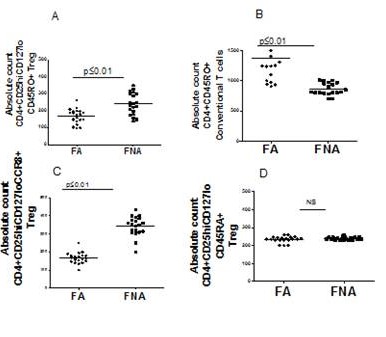Grantee Research Project Results
2011 Progress Report: Novel Immunological Approaches to Link Ambient Air Pollution Exposure to Health Outcomes
EPA Grant Number: R834786Title: Novel Immunological Approaches to Link Ambient Air Pollution Exposure to Health Outcomes
Investigators: Nadeau, Kari
Institution: Stanford University
EPA Project Officer: Hahn, Intaek
Project Period: January 1, 2011 through December 31, 2013
Project Period Covered by this Report: February 1, 2011 through January 31,2012
Project Amount: $250,000
RFA: Exploring Linkages Between Health Outcomes and Environmental Hazards, Exposures, and Interventions for Public Health Tracking and Risk Management (2009) RFA Text | Recipients Lists
Research Category: Air Quality and Air Toxics , Human Health
Objective:
The purpose of the project is to innovatively examine whether chronic ambient air exposures, the health outcomes of individual children, and changes in the immune system are correlated. The results are essential for understanding immune mechanisms that could be related to exposure and health outcomes. Overall, the results would help in decreasing and preventing the burden of asthma and allergy and reducing exposure to air pollution.
The overall goal of this research is to further understand of the link between indicators of exposure and outcomes on human health by studying immune system changes in subjects exposed to elevated levels of ambient air pollution. We hypothesize that immunological indicators linked to environmental exposure and health outcomes will elucidate the role and mechanism of air pollution in asthma, a link that is theoretically understood, circumstantially clear, but not yet proven. We have developed a comprehensive novel indicator of hazard exposure that can be performed on one drop of blood. We will correlate cellular, serological, and epigenetic biomarker changes in peripheral blood that can be broadly applied to an individual health outcome. The objectives of the research are to:
Progress Summary:
- DNA methylation of the Foxp3 gene results in decreased FoxP3 protein levels in Treg and that the levels of FoxP3 decrease are associated with increases in levels of exposure to polycyclic aromatic hydrocarbons.
- Downregulation of chemokine receptor/cognate ligand pairs (CCR8/CCL1) is worsened by exposure to polycyclic aromatic hydrocarbons.
- Decreases in Treg-associated (TGF-b and IL-10) and increases in Th2-associated plasma markers (IL-4 and IL-13) correlate with increased levels of exposure to ambient air pollution.
- Higher degrees of Treg impairment correlate with the severity of asthma.
- Lower levels of Treg immune indicators can be detected in non-asthmatic children exposed to elevated levels of ambient air pollution, and if the Treg immune indicators increase over the 4 time points of the study (baseline, 6 mo, 12 mo and 18 mo), then these children might be at risk for developing asthma. Definitive analysis for the positive predictive value of a Treg immune indicator is outside the scope of this study but we plan to collect evidence in this proposed research to further test the predictive value in the future.
- Provide sufficient evidence to help understand the link between environmental hazard, exposure (individual estimate exposures), and health outcomes (asthma) through the database collected from a large population in Fresno, CA
- Characterize the relationship between ambient air pollution exposure and biomarkers that can be used to indicate the health outcomes of asthma.
Preliminary Results:

Figure 1. Low numbers of memory Treg in Fresno Asthmatic (FA) cohort.
Multicolor flow cytometry performed (LSR II, BD Biosciences) on less than
500 µl whole blood stained with antibodies and cell were gated for:
(A) CD450RO+ Treg in FA (n=20, FNA (n=20); (B) CD4+CD45RO+ T cells
in FA (n=20), FNA (n=20); (C) CCR8+ Treg in FA (n=20). CBC with differential
was used with % of each subset to determine absolute numbers (cells/µL). P
values ≤0.05 represented significant differences from one-way ANOVA using
non-parametric Kruskall-Wallis Test and pairwise post-test comparisons via
Dunns multiple companion test.
Future Activities:
- Complete the collection of all samples and clinical outcome measures every 6 months.
- Complete our analysis of repeat immune measures (i.e., Treg function, Foxp3 expression, DNA methylation of Foxp3 locus) and repeat clinical outcomes (pulmonary function tests and health questionnaires) on each subject.
- Obtain short-term and long-term individual estimate exposures to ambient air PAHs, PM2.5, black carbon and ozone, and then test whether there is an association of the extent of exposure in each subject to immune outcome measures in the same subject.
- If the data represent interesting findings, we will submit a manuscript on the EPA-funded cohorts.
Journal Articles on this Report : 1 Displayed | Download in RIS Format
| Other project views: | All 9 publications | 4 publications in selected types | All 4 journal articles |
|---|
| Type | Citation | ||
|---|---|---|---|
|
|
Nadeau K, McDonald-Hyman C, Noth EM, Pratt B, Hammond SK, Balmes J, Tager I. Ambient air pollution impairs regulatory T-cell function in asthma. Journal of Allergy and Clinical Immunology 2010;126(4):845-852.e10. |
R834786 (2011) R834596 (2010) R834596 (2011) R834596C003 (2010) R834596C003 (2011) R835435 (Final) |
Exit Exit |
Supplemental Keywords:
biology, genetics, epidemiology, analytical, California, CA, Region 9, transportation, Health, RFA, Scientific Discipline, Air, HUMAN HEALTH, Health Risk Assessment, Immunology, particulate matter, Biology, Allergens/Asthma, Biochemistry, Health Effects, bioavailability, asthma, airborne particulate matter, immune response, PM10, airborne pollutants, allergic response, ambient air quality, human health effects, biomarkersProgress and Final Reports:
Original AbstractThe perspectives, information and conclusions conveyed in research project abstracts, progress reports, final reports, journal abstracts and journal publications convey the viewpoints of the principal investigator and may not represent the views and policies of ORD and EPA. Conclusions drawn by the principal investigators have not been reviewed by the Agency.
